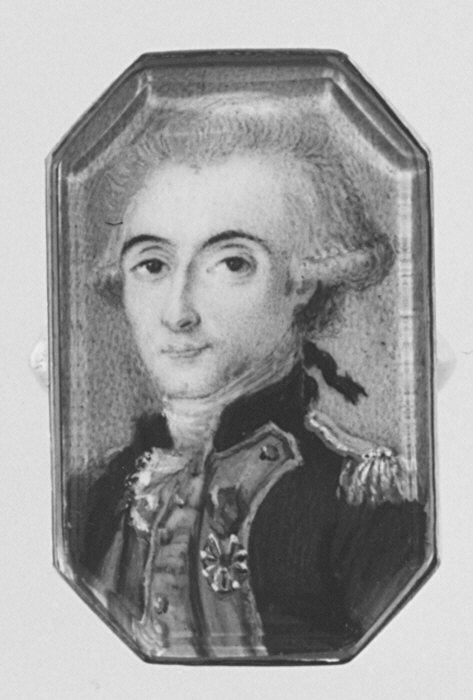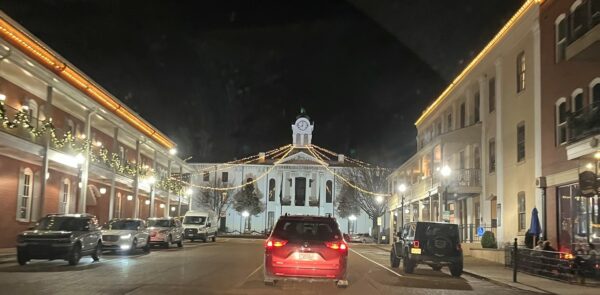Judges and Justice and Time for Children
I wish I knew more about the place names we see all around us. Sometimes they seem pretty obvious. We live in Jackson County, Tennessee, which is named for Andrew Jackson. Our Jackson County was Jackson County even before Andrew Jackson was president. Like many of the place names around us, the name of our county seat of Gainesboro is more obscure to those of us living in 2023. The town is named for General Edmund Pendleton Gaines. Gaines fought with Jackson at the Battle of New Orleans. Jackson came to Gainesboro to recruit men to fight in the War of 1812, so the name wasn’t obscure for the people living here when Gainesboro became the county seat in 1817, just two years after the battle.
Oxford, Mississippi, is in Lafayette County. When the Mississippi legislature established Lafayette County in 1836, they named it for the Marquis de Lafayette, the young Frenchman who came to America in 1777 to help George Washington and his Continental Army in the American Revolution.

The land that is now Oxford once belonged to the Chickasaw Nation. Three white men purchased fifty acres from two Chickasaw. Their names were HoKa (a woman) and E Ah Nah Yea. T. D. Isom lived in the settlement. He suggested that the town be called Oxford because of Oxford University in England. Isom hoped that naming it Oxford would cause the Mississippi government to decide to put a university there.
In 1840 the first county courthouse was completed on the Oxford town square. T. D. Isom’s dream came true the following year when the Mississippi legislature decided to build the University of Mississippi in Oxford. In 1848 the Lyceum was opened on the university campus. The building still stands. Students of the modern civil rights movement remember that the Lyceum was the scene of a major civil rights conflict on September 30, 1962, when James Meredith tried to enroll at the University of Mississippi. Friends we knew in Oxford in the 1970s and 1980s remembered when President John F. Kennedy sent federal troops to stop the ensuing riots. Meredith did enroll in Ole Miss on October 1. He graduated with a bachelor’s degree in 1963 and later graduated from Columbia Law School.

In December 1862, eight months after the Battle of Shiloh, General Ulysses S. Grant brought his troops to Oxford. They camped in the area for three weeks, including on the grounds of the Lafayette County Courthouse, leaving just before Christmas.

General William Tecumseh Sherman and his troops came to Oxford in 1864. They set fire to the courthouse. A young person from Oxford rescued most of the county records. Some people said he was only 14 years old. People took the records away in wagons to places around the county. General Sherman and his troops also burned many of the town’s businesses and homes. When the fires were out, the only buildings remaining on the square were the burnt brick walls of the courthouse and one other building.
During the time of Reconstruction after the Civil War, Lafayette County received help from the U.S. government to construct a new courthouse. That courthouse opened in 1873 and still stands.

I wanted to visit the historic courthouse while we were in Oxford during the first week of January.

On Wednesday morning, some of our grandchildren noticed people in orange and white prison uniforms entering the courthouse. Our nine-year-old grandson was particularly interested in that scene and wanted very much to see court in session. We were busy seeing our little house and playing at the playground that morning, so we didn’t go into the courthouse until the afternoon. I decided to ask someone in one of the offices if we could watch a session of court. She said that there was no court in session then but that pleas were taking place in one of the courtrooms and we could go in and watch.
We climbed the beautiful staircase and walked rather sheepishly into the grand courtroom on the second floor. We four adults and five children slipped onto one of the elegant curved pews at the very back of the room, trying to be as inconspicuous as possible. Prisoners clad in orange and white sat on the front pew far in front of us, as several professionals did their jobs at the front of the room. I was in awe of the room, staring up at the crystal chandeliers hung from the tongue and groove ceiling and looking from side to side at the two-story-tall arched windows.
After a few minutes, a pretty young woman in business attire and an older man in a sport coat walked to the back and stood in front of us, commenting that they hadn’t seen us before. When they learned of our grandson’s interest, the woman told us that she had recently been elected a judge and asked if the children would like for her to take them to another courtroom where she would tell them all about what happens there.
Soon we were following her to a small, but also elegant, courtroom on the first floor. She told the children about the bar, the bench, and the jury box. She showed them where the defense sits and where the prosecutor sits and told them why they sit in those locations. She showed us the jail room where prisoners stay until they are called in and the room where the jury makes its decision.
The judge told us that she had worked both as a defense attorney and a prosecutor. She told the story of one of the cases she is most proud of and about her own decision to become first a lawyer and then a judge. She said since the second grade she had known what she wanted to be when she grew up. As a second grader, she was fascinated by the whole legal system. She said that she believes the American justice system works well 99 percent of the time. Then, she let the children join her at the bench and posed for pictures with them.
The exercise of justice is joy for the righteous,
But is terror to the workers of iniquity.
Proverbs 21:15
He has told you, O man, what is good;
And what does the Lord require of you
But to do justice, to love kindness,
And to walk humbly with your God?
Micah 6:8

